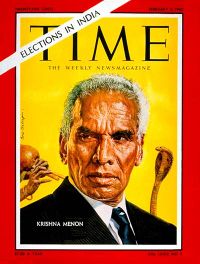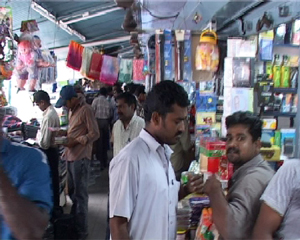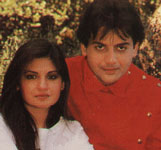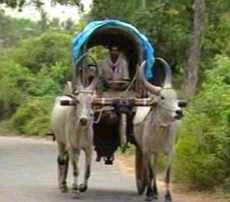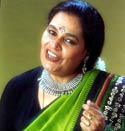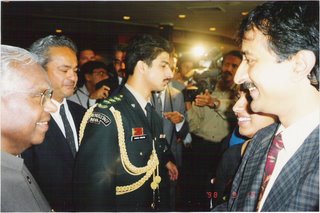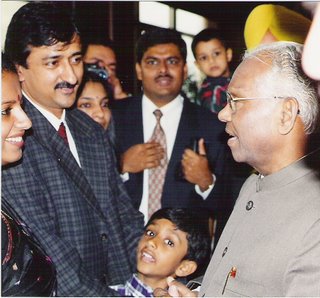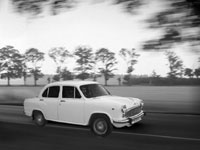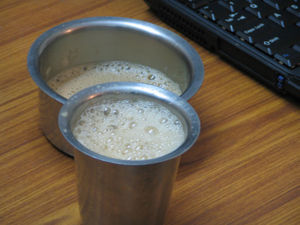One of the best movies I had seen in 2005 (or was it 2004) was without doubt Perumazhakalam directed by Kamal and written by TA Razak. A wonderful movie starring Meera Jasmine, Kavya Madhavan, Mamukoya and Dileep. I saw it a while ago, so I recall only the main parts of the movie and the impressions it left. The songs were memorably done by M Jayachandran, and visually it was raining all through the movie, an effect that added to the pathos the director conveyed so effectively.
 Kamal (Kamaluddin) has always made great Malayalam movies. Kakkothikkavile Appooppan Thadikal, Orkkappurathu, Gramaphone,Nammal, Meghamalhar, , Mazayettum munpe, Ulladakkam, Niram, swapnakoodu, Manjupoloru penkutti, Gazhal..the list goes on.
Kamal (Kamaluddin) has always made great Malayalam movies. Kakkothikkavile Appooppan Thadikal, Orkkappurathu, Gramaphone,Nammal, Meghamalhar, , Mazayettum munpe, Ulladakkam, Niram, swapnakoodu, Manjupoloru penkutti, Gazhal..the list goes on.
PMK has four characters, two women and two men. The men have very brief roles, one of them Vineeth is ‘accidentally’ killed by Dileep in Saudi Arabia, where Shariya rules apply in these cases. Which simply put, states in this case …life for a life…You get to know the brief & intense relationships between the wives and the two husbands mainly as flashbacks…Well, Dileep has to die and his wife Razia-Meera Jasmine decides to try and get Vineeth’s wife Ganga - Kavya to formally
Vineeth is ‘accidentally’ killed by Dileep in Saudi Arabia, where Shariya rules apply in these cases. Which simply put, states in this case …life for a life…You get to know the brief & intense relationships between the wives and the two husbands mainly as flashbacks…Well, Dileep has to die and his wife Razia-Meera Jasmine decides to try and get Vineeth’s wife Ganga - Kavya to formally  forgive Dileep for the crime. With only such a document can the death sentence be stayed…A simple and poignant story covering so many aspects of life, the caste and religious climate, and of course the gulf worker and his place in Kerala. Meera Jasmine does wonders to the role and aptly the movie won awards. Mamukoya was, if you ask me, brilliant, topping the honors next to Meera J. So much for Perumazhakkalam, a ‘do not miss’ but ‘have your tissues ready’ movie. I wish every second Malayalam movie is as poignant as this one. It is reviewed by many on the web…
forgive Dileep for the crime. With only such a document can the death sentence be stayed…A simple and poignant story covering so many aspects of life, the caste and religious climate, and of course the gulf worker and his place in Kerala. Meera Jasmine does wonders to the role and aptly the movie won awards. Mamukoya was, if you ask me, brilliant, topping the honors next to Meera J. So much for Perumazhakkalam, a ‘do not miss’ but ‘have your tissues ready’ movie. I wish every second Malayalam movie is as poignant as this one. It is reviewed by many on the web…
With all this in a distant corner of my mind, we set to watch “Dor’ by Nagesh Kuknoor. I had not read anything about it, but well it was Kuknoor and we had seem almost all his movies, truly enjoying Iqbal & Hyderbad blues. (I watched some others that have been quickly forgotten, but Rockford is still ‘view in progress’).
Kuknoor. I had not read anything about it, but well it was Kuknoor and we had seem almost all his movies, truly enjoying Iqbal & Hyderbad blues. (I watched some others that have been quickly forgotten, but Rockford is still ‘view in progress’).
The scenes were breathtaking, the photography brilliant, and Gul Panag as Zeenat captivating. The two men from two corners of India Hp and Rajasthan boarded vehicles and bound for the flights to the middle east, a few days passed, the ill fated trunk call came to Zeenat and then it hit me, Shit, this is probably a remake of Perumazhakalam!!! Unfortunately the rest of the viewing was, I admit, critical and mentally comparing the movie with PMK…but well, in the end I must say the movie was good in its own way. A few bits could have been done better, for example the ending and here is where you see the difference between Kamal the master and Kuknoor the novice. The character played by Shreyas Talpade – Bhairoopia though refreshing could have been crafted better.
 Gul as Zeenat does reasonably well in comparison to Meera J, but what you see from the beginning is that Dor is meant to be much lighter and for a wider audience. It moves well and true. Kuknoor does a wee bit in a couple of frames – the locales are so well captured on celluloid…but the music never finds a place in Dor unlike the MJC music in PMK. Ayesha Takia was passable…
Gul as Zeenat does reasonably well in comparison to Meera J, but what you see from the beginning is that Dor is meant to be much lighter and for a wider audience. It moves well and true. Kuknoor does a wee bit in a couple of frames – the locales are so well captured on celluloid…but the music never finds a place in Dor unlike the MJC music in PMK. Ayesha Takia was passable…
The story is just about the same, a little less realistic towards the end, a mite faster than PMK - but nevertheless an enjoyable one… do watch it. Kuknoor had done two interviews (Int1, Int2) answering questions about the similarities between the two movies, but the key question – was one lifted from the other? Kuknoor says not, that both are based on the same real life story, though he paid Kamal for the rights to avoid hassles!
A slight twist here – Apparently PMK shares the theme with an Iranian movie ‘Dame Sobh’ as explained in this Hindu article… I have not seen the latter.
One scene I smiled at in Dor was the mobile phone rental service. How effective it was, the girl standing on a mound (to capture the signal) and talking for a minute – the owner checking his watch carefully for the seconds timing by…India is changing, gone are the visits to the post office to make an ISD call and scream at the top of your voice to get heard…I don’t think many of you would have seen the earlier wind up phones, I have seen them in the 60’s in my dad’s house in the estates…you have to crank them before and as you talk on…
Or how it was some decades ago in the Middle East, Since there were not so many phones in Kerala and since mobile phones were not even invented, people had to think of other ideas & methods to get their thoughts across to loved ones. They talked (some sang) into cassette tapes and posted or couriered them through others traveling back home (Filipinos also did it). This record of their thoughts & messages, resulting in a new wave called ‘Kathu pattu’ during the late 70’s.
BTW - For those interested – the Shariyyah law is based on
Intentional Murder = The Qur'an legislates the death penalty for murder, although forgiveness and compassion are strongly encouraged. The murder victim's family is given a choice to either insist on the death penalty, or to pardon the perpetrator and accept monetary compensation for their loss (2:178).
Tail note – Another movie you should watch is ‘Khosla ki Ghosla’ – Truly brilliant.
 Kamal (Kamaluddin) has always made great Malayalam movies. Kakkothikkavile Appooppan Thadikal, Orkkappurathu, Gramaphone,Nammal, Meghamalhar, , Mazayettum munpe, Ulladakkam, Niram, swapnakoodu, Manjupoloru penkutti, Gazhal..the list goes on.
Kamal (Kamaluddin) has always made great Malayalam movies. Kakkothikkavile Appooppan Thadikal, Orkkappurathu, Gramaphone,Nammal, Meghamalhar, , Mazayettum munpe, Ulladakkam, Niram, swapnakoodu, Manjupoloru penkutti, Gazhal..the list goes on.PMK has four characters, two women and two men. The men have very brief roles, one of them
 Vineeth is ‘accidentally’ killed by Dileep in Saudi Arabia, where Shariya rules apply in these cases. Which simply put, states in this case …life for a life…You get to know the brief & intense relationships between the wives and the two husbands mainly as flashbacks…Well, Dileep has to die and his wife Razia-Meera Jasmine decides to try and get Vineeth’s wife Ganga - Kavya to formally
Vineeth is ‘accidentally’ killed by Dileep in Saudi Arabia, where Shariya rules apply in these cases. Which simply put, states in this case …life for a life…You get to know the brief & intense relationships between the wives and the two husbands mainly as flashbacks…Well, Dileep has to die and his wife Razia-Meera Jasmine decides to try and get Vineeth’s wife Ganga - Kavya to formally  forgive Dileep for the crime. With only such a document can the death sentence be stayed…A simple and poignant story covering so many aspects of life, the caste and religious climate, and of course the gulf worker and his place in Kerala. Meera Jasmine does wonders to the role and aptly the movie won awards. Mamukoya was, if you ask me, brilliant, topping the honors next to Meera J. So much for Perumazhakkalam, a ‘do not miss’ but ‘have your tissues ready’ movie. I wish every second Malayalam movie is as poignant as this one. It is reviewed by many on the web…
forgive Dileep for the crime. With only such a document can the death sentence be stayed…A simple and poignant story covering so many aspects of life, the caste and religious climate, and of course the gulf worker and his place in Kerala. Meera Jasmine does wonders to the role and aptly the movie won awards. Mamukoya was, if you ask me, brilliant, topping the honors next to Meera J. So much for Perumazhakkalam, a ‘do not miss’ but ‘have your tissues ready’ movie. I wish every second Malayalam movie is as poignant as this one. It is reviewed by many on the web…With all this in a distant corner of my mind, we set to watch “Dor’ by Nagesh
 Kuknoor. I had not read anything about it, but well it was Kuknoor and we had seem almost all his movies, truly enjoying Iqbal & Hyderbad blues. (I watched some others that have been quickly forgotten, but Rockford is still ‘view in progress’).
Kuknoor. I had not read anything about it, but well it was Kuknoor and we had seem almost all his movies, truly enjoying Iqbal & Hyderbad blues. (I watched some others that have been quickly forgotten, but Rockford is still ‘view in progress’).The scenes were breathtaking, the photography brilliant, and Gul Panag as Zeenat captivating. The two men from two corners of India Hp and Rajasthan boarded vehicles and bound for the flights to the middle east, a few days passed, the ill fated trunk call came to Zeenat and then it hit me, Shit, this is probably a remake of Perumazhakalam!!! Unfortunately the rest of the viewing was, I admit, critical and mentally comparing the movie with PMK…but well, in the end I must say the movie was good in its own way. A few bits could have been done better, for example the ending and here is where you see the difference between Kamal the master and Kuknoor the novice. The character played by Shreyas Talpade – Bhairoopia though refreshing could have been crafted better.
 Gul as Zeenat does reasonably well in comparison to Meera J, but what you see from the beginning is that Dor is meant to be much lighter and for a wider audience. It moves well and true. Kuknoor does a wee bit in a couple of frames – the locales are so well captured on celluloid…but the music never finds a place in Dor unlike the MJC music in PMK. Ayesha Takia was passable…
Gul as Zeenat does reasonably well in comparison to Meera J, but what you see from the beginning is that Dor is meant to be much lighter and for a wider audience. It moves well and true. Kuknoor does a wee bit in a couple of frames – the locales are so well captured on celluloid…but the music never finds a place in Dor unlike the MJC music in PMK. Ayesha Takia was passable…The story is just about the same, a little less realistic towards the end, a mite faster than PMK - but nevertheless an enjoyable one… do watch it. Kuknoor had done two interviews (Int1, Int2) answering questions about the similarities between the two movies, but the key question – was one lifted from the other? Kuknoor says not, that both are based on the same real life story, though he paid Kamal for the rights to avoid hassles!

A slight twist here – Apparently PMK shares the theme with an Iranian movie ‘Dame Sobh’ as explained in this Hindu article… I have not seen the latter.
One scene I smiled at in Dor was the mobile phone rental service. How effective it was, the girl standing on a mound (to capture the signal) and talking for a minute – the owner checking his watch carefully for the seconds timing by…India is changing, gone are the visits to the post office to make an ISD call and scream at the top of your voice to get heard…I don’t think many of you would have seen the earlier wind up phones, I have seen them in the 60’s in my dad’s house in the estates…you have to crank them before and as you talk on…
Or how it was some decades ago in the Middle East, Since there were not so many phones in Kerala and since mobile phones were not even invented, people had to think of other ideas & methods to get their thoughts across to loved ones. They talked (some sang) into cassette tapes and posted or couriered them through others traveling back home (Filipinos also did it). This record of their thoughts & messages, resulting in a new wave called ‘Kathu pattu’ during the late 70’s.
BTW - For those interested – the Shariyyah law is based on
Intentional Murder = The Qur'an legislates the death penalty for murder, although forgiveness and compassion are strongly encouraged. The murder victim's family is given a choice to either insist on the death penalty, or to pardon the perpetrator and accept monetary compensation for their loss (2:178).
Tail note – Another movie you should watch is ‘Khosla ki Ghosla’ – Truly brilliant.



